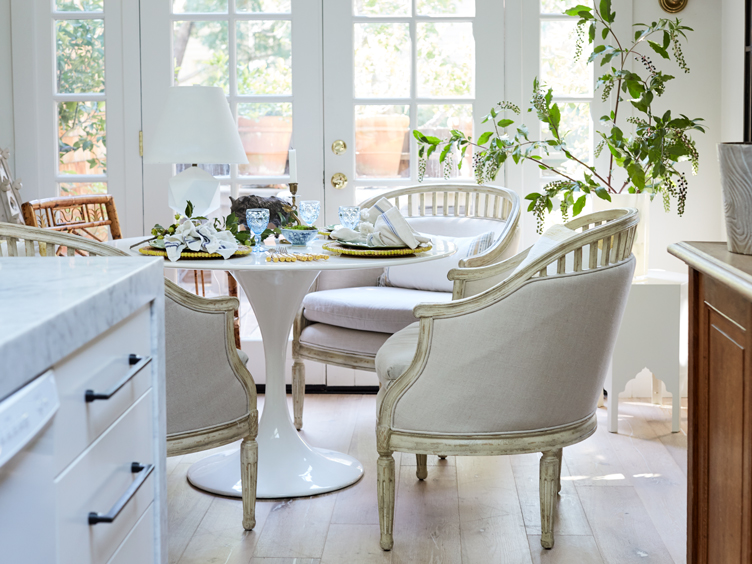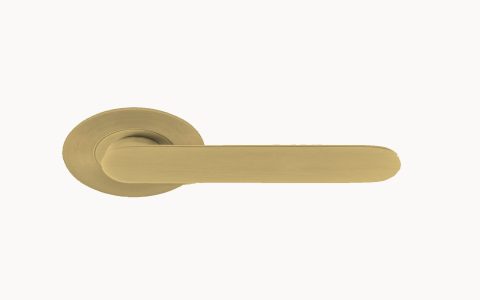The Enduring Appeal of the Tulip Table
A quintessential piece of mid-century modern design, the Tulip Table, officially known as the Pedestal Table, remains a celebrated icon for its innovative form and timeless elegance. It is characterized by its single, flared pedestal base and often a round or oval top, embodying a futuristic yet classic aesthetic.
Origins and Designer
The Tulip Table was conceived by Finnish-American architect and industrial designer Eero Saarinen in the mid-1950s, specifically between 1955 and 1957. It was part of his "Pedestal Collection" for the Knoll company. Saarinen's primary objective was to simplify and declutter the domestic environment by eliminating what he referred to as the "slum of legs" typically found under tables and chairs.
Design Philosophy and Key Features
Saarinen sought to create furniture that was visually unified and structurally rational. The Tulip Table exemplifies this with:

- A Single Central Pedestal: The most defining feature is its slender, sculptural base, usually made from heavy molded cast aluminum. This base tapers gracefully from the floor to support the tabletop, resembling the stem of a tulip.
- Fluid, Organic Form: The design showcases smooth, continuous lines, reflecting the biomorphic influences prevalent in mid-century modernism.
- Variety of Tops: The base is designed to support various tabletop shapes (commonly round or oval) and materials.
This design not only provides a clean, uncluttered look but also offers practical benefits like increased legroom and easier cleaning.
Materials and Construction
Authentic Saarinen Tulip Tables by Knoll are known for their quality materials and construction. Key aspects include:
- Base: Typically cast aluminum, often finished with a tough, abrasion-resistant Rilsan coating (a type of polyamide powder coating) in white or black. The base is also heavily weighted for stability.
- Tabletops: Originally offered in a range of materials:
- Laminate: A durable and more accessible option, frequently in white or black.
- Marble: Considered the most iconic, with choices like Arabescato (white with grey veining), Statuarietto (crisp white with distinct grey veining), Nero Marquina (black with white veining), and Verde Alpi (green). Marble tops feature a polyester coating to prevent staining.
- Wood Veneer: Options like walnut, oak, or teak provide a warmer aesthetic.
- Beveled Edge: Tabletops, particularly marble and laminate, typically feature a refined, knife-like beveled edge, enhancing their sleek profile.
Identifying Characteristics and Authenticity
While numerous reproductions exist, key identifiers for original or high-quality versions include:
- The fluid, single-stem pedestal base that is integral to the design.
- A heavy, stable base, often with a KnollStudio logo and Eero Saarinen's signature on the underside of the top or an affixed plate on the base for authentic Knoll pieces.
- The precisely beveled edge on the tabletop.
- Quality of materials: Genuine marble will have unique, natural veining. The finish on the base should be smooth and durable.
Legacy and Versatility
The Tulip Table, alongside the matching Tulip Chairs, quickly became a hallmark of modern design, winning numerous awards. Its enduring appeal lies in its:
- Timeless Aesthetic: The clean lines and sculptural form remain contemporary and sophisticated.
- Versatility: It functions effectively as a dining table, kitchen table, side table, or coffee table, adapting to various sizes and settings.
- Space-Saving Design: The single pedestal allows for flexible chair placement and a less cluttered visual footprint.
The Tulip Table continues to be a sought-after piece for its ability to seamlessly integrate into diverse interior styles, from purely mid-century modern to contemporary and minimalist spaces, proving Saarinen's vision of creating lasting, functional art.







